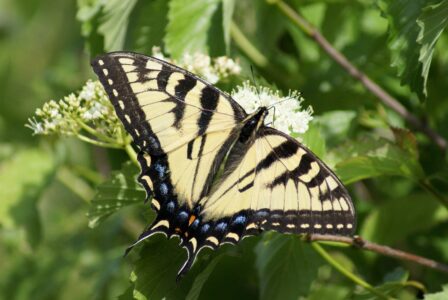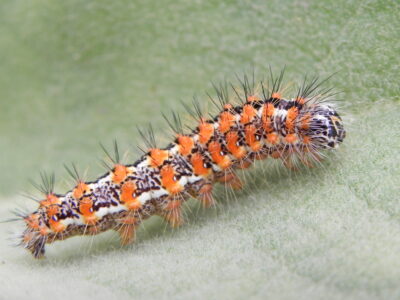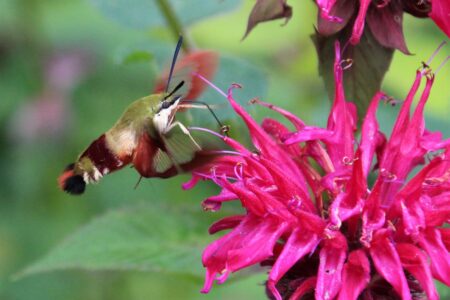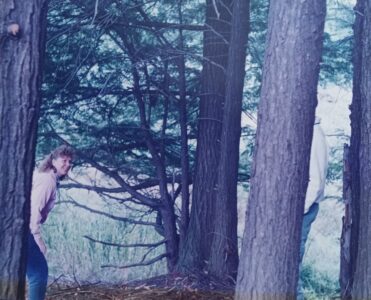Caterpillars, moths, and butterflies!
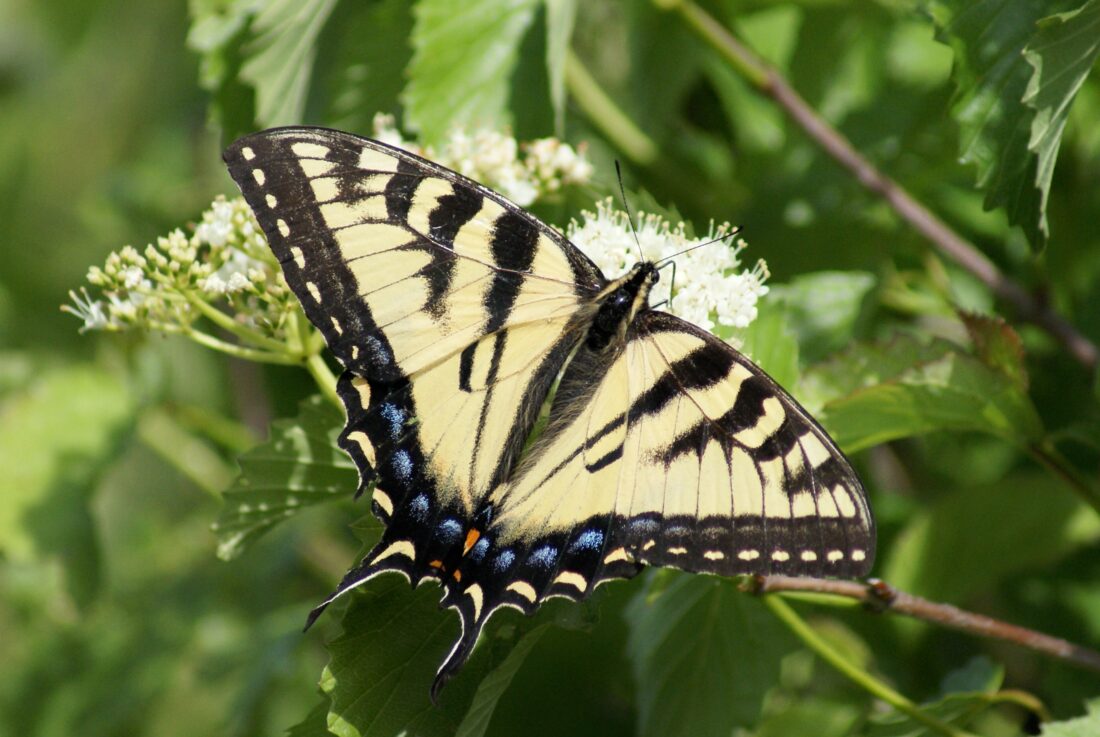
Photo by Terry LeBaron A tiger Swallowtail butterfly is pictured.
- Photo by Terry LeBaron A tiger Swallowtail butterfly is pictured.
- A cattail caterpillar is pictured.
- A hummingbird moth is pictured drinking from a flower.
That rainbow of colors is one way many species stay safe. Although bright colors make them stand out, they are also usually a sign that something is toxic to eat, warding off would-be predators. This is true of butterflies like the Monarch, whose diet of milkweed leaves them poisonous, even as adults. There are also several types of butterflies that mimic other species, such as the Viceroy which appears almost identical to a Monarch and pretends to be toxic while being harmless. Even certain moths can be found with bright colors. My favorite is the Rosy Maple Moth, which is a stunning bright pink and yellow and looks almost fake. Hummingbird Moths can hover and are so big that at a glance they can easily be mistaken for their avian namesake.
However, not all species are colorful and showy. Some use camouflage to protect themselves instead of warning off predators with bright colors. A few species of moth look like bird poop, which is the opposite of appetizing for most creatures. There are many who instead blend into their natural environment, becoming nearly invisible when sitting on a tree or branch. Many moth species are shades of patterned brown and gray, matching perfectly with the tree bark or shade they hang out in. Even butterflies like the Fritillaries can blend in with their orange and black spots, matching the sun-dappled shade.
Whether it’s through bright colors or clever camouflage, the striking appearances of butterflies and moths are not exclusive to the adult forms. Many caterpillars are just as visually interesting. There are caterpillars that look almost identical to a twig, and when they’re not eating, they will stand on back legs with their body stretched out straight and are almost impossible to distinguish from the twigs and branches they stand on. On the other side of the spectrum, monarch caterpillars are brightly striped with white, yellow, and black. Many caterpillars appear to have fuzzy fur or hair covering their bodies.
At ACNC we’ve been raising Cecropia Moth caterpillars, notable for being the largest moth species in North America. We have an enclosure set up at the reception desk that you can come and visit to see how neat they are close up. The caterpillars are bright green with blue, yellow, and red lumps that come out of their back and sides. The colorful lumps also have tiny black spikes on them. Despite the bright coloring and tiny spikes, they are completely harmless to touch. If you listen carefully, you can even hear them crunching as they munch away at leaves. Once the caterpillars have finished eating and growing, they will spin themselves into a cocoon which they will stay in, dormant, for several months before emerging late next spring as adults.
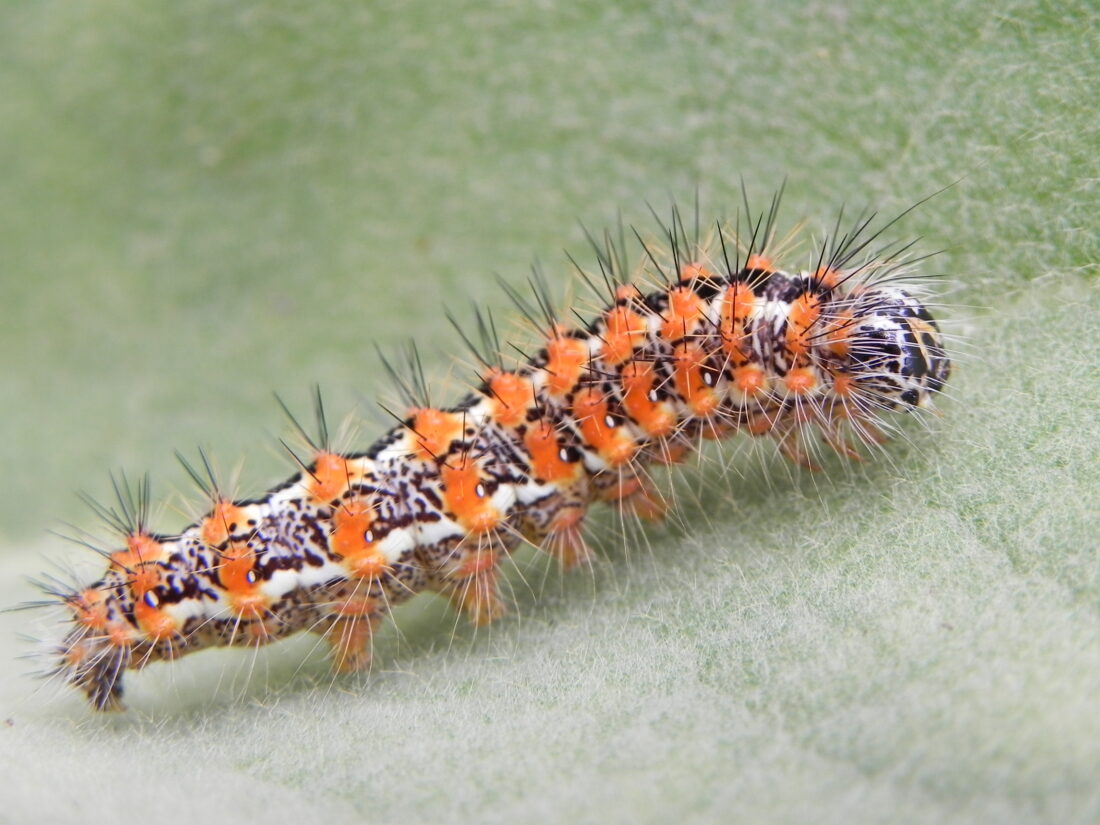
A cattail caterpillar is pictured.
Not only are they fun to watch, but these insects also play a very important role in the ecosystem. Caterpillars are an important food source for many animals, because they contain a lot of protein and energy. Songbirds feed caterpillars to their young to help them grow big and strong.
Studies show that Black-capped Chickadees may feed as many as 9,000 caterpillars to a clutch of young in order to raise them successfully.
Once caterpillars become adults, they are still a food source. But butterflies also become important pollinators, carrying pollen between flowers as they drink nectar. Conversely, in many species of moths, the adult’s sole purpose is to go out and mate and lay eggs for the next generation. Silk moth species like the Cecropia Moths don’t even possess mouths as adults, eating everything they need for life as caterpillars.
Life as a butterfly or moth is so very different than life as a human. However after watching one flutter by, it’s almost impossible not to feel a sense of awe at the wonder and beauty found in the natural world.
Audubon Community Nature Center builds and nurtures connections between people and nature. ACNC is located just east of Route 62 between Warren and Jamestown. The trails are open from dawn to dusk and birds of prey can be viewed anytime the trails are open. The Nature Center is open from 10 a.m. until 4:30 p.m. daily except Sunday when it opens at 1 p.m. More information can be found online at auduboncnc.org or by calling (716) 569-2345.
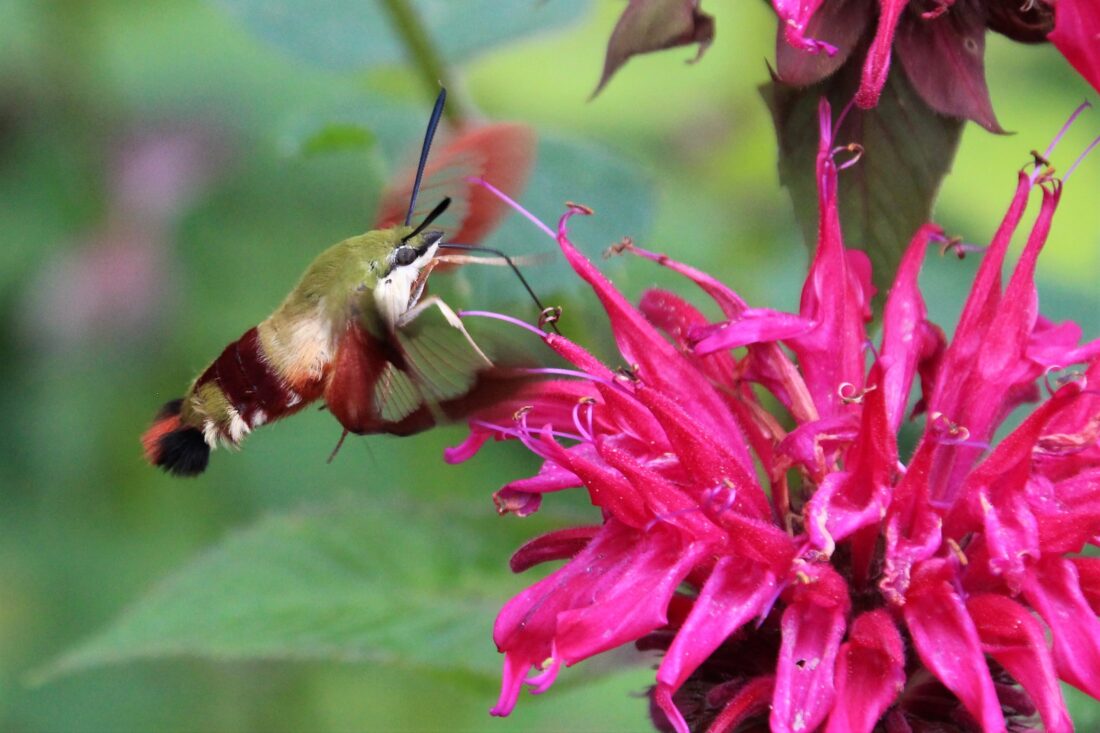
A hummingbird moth is pictured drinking from a flower.

